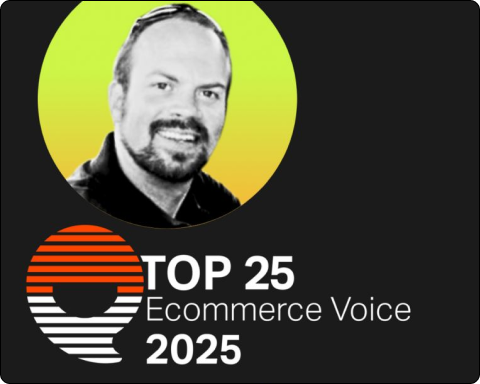We often talk up the conversion rate (CVR) of site search users. “Searchers convert three to five times higher than regular browsers” is generally how it goes. As if site search is some kind of eCommerce superpower. And on paper, it looks like a no-brainer because if your site search converts better, maybe you should be pushing more users to it, right? Wrong.
That high conversion rate isn’t evidence that your search is amazing. It’s a sign that only your most determined shoppers are making it through. So, let’s unpack why funnelling more users into search can backfire, why your current setup might not be as strong as you think, and most importantly, what you should do to fix it.
High-Converting Search Users is a bit of a myth.
Here’s the truth: a high CVR does not equate to a good experience. It’s an indicator of the intent of the people in the group.
It equates to Search users converting well because they’re already buyers. They know what they want. Whether they’re planning a full kitchen remodel with bold red appliances or shopping for a dress for an upcoming wedding, they’re not just browsing, they’re buying. Your search box is simply the last stop on their journey.
Customers who use site search are what we call your highest-intent shoppers. They are the ones who come to your site having already done their research elsewhere. They have a specific product in mind which they just need to locate and then purchase. And that’s the reason why they convert. Not because your search is seamless, intuitive or hyper-personalised – it’s because they already know what they want.
Now consider your low-intent shoppers. They’re still exploring, browsing, unsure of what they want. They have yet to confirm their intent. Forcing them into the same search experience that barely serves high-intent users will only frustrate them. They’ll end up in no-results pages or overwhelmed by irrelevant products – turning potential buyers into bounce stats.
Your Site Search Isn’t As Good As You Think
Now here’s where it gets more complicated. Before you pat yourself on the back for having a high-converting search experience, take a step back and ask yourself the following questions:
- How many searches fail outright? This includes searches that deliver little to no results and forces customers into frustrating dead ends.
- How often do users refine their search more than once? This is a clear sign that their first result did not align with their intent.
- How many users “rage quit” after getting irrelevant results? This results in your competitors getting their business.
- How many use Google instead because your current search is just too frustrating?
Chances are, your search isn’t some hidden gem of eCommerce UX – it’s just barely good enough for even the most determined shoppers to power through. The real numbers can be found by taking a look outside of your glowing conversion report because that will surely tell a different story of failed searches that lead to swift exits, searches that result in too many (or too few) results leaving customers overwhelmed and users who abandon search altogether and manually browse instead. What you view as a “high performing” search function is most likely a minefield of lost sales and bad experiences that need fixing.
What You Should Be Fixing Instead
The real question we need to tackle next is: what should you be fixing instead? The answer is to stop trying to push more people into search and start making search actually work for those who need it. And that begins with addressing the foundational flaws.
Reduce Failed Searches
If a potential customer visits your site with intent and is met with 0 search results, or worse, 22 pages of useless results, you’ve just lost a very easy win.
Here’s how you can reduce your failed searches:
- Analyse your zero-results searches and fix the gaps in your catalogue, synonyms and indexing.
- Implement Natural Language Processing (NLP). People don’t search like machines, so don’t restrict them with overly strict search terms.
If your search bar isn’t guiding users before they hit enter, you’re placing too much pressure on them to get it right the first time. Help them out by using auto-suggestions to guide them.
Improve Search Relevance:Search isn’t just about finding something, it’s about finding the right thing. Improving your search relevance will bridge the gap between browsers and buyers, so be sure to look at the following:
- Are you ranking products by what sells, or just by random keyword matches?
- Can your search handle misspellings, pluralisation and phrasing variations? Because at the end of the day, we don’t all get it right the first time.
- Does it understand context? A search for a “black bag” should not pull black umbrellas just because the word “black” appears somewhere in the description.
Optimise Product Data and Attributes:
Even the best search engines in the world can’t compensate for bad product data, so:
- Clean up your attributes – if “colour” includes “ruby” but not “red”, don’t expect your search results or filters to make sense.
- Consistency is key – make sure everything is tagged and structured in the same way across your entire catalogue.
- Use filters – users shouldn’t have to guess what options are hidden under vague or broken filters.
Personalise the Experience:
Create your search in a way that allows users to feel understood – not as if they’re meeting for the first time:
- Use AI-driven search – A first-time visitor and a returning customer should not get the same generic results. Be sure to utilise AI-driven search so that the search will prioritise products based on past behaviour and trending items.
Give People Better Navigation and Discovery:
If people are using search because they have to, you’ve already lost them, so:
Fix your navigation and offer curated “Shop by Category” and “Shop by Need” sections for users who aren’t search-first.
The Bottom Line: Fix Search, Never Force It
Driving more people to site search doesn’t magically increase conversions – it just exposes more customers to a flawed experience. Rather than treating search as a high-performing shortcut, treat it as a work in progress or a crucial safety net for high-intent users that needs constant optimisation.
Because here’s the brutal truth: if your search experience was really great, you wouldn’t have bounce rates, frustrated users, or people leaving to search on Google. You would have more purchases.
That sky-high conversion rate? It’s not the full story. It’s just the tip of a very leaky iceberg.



